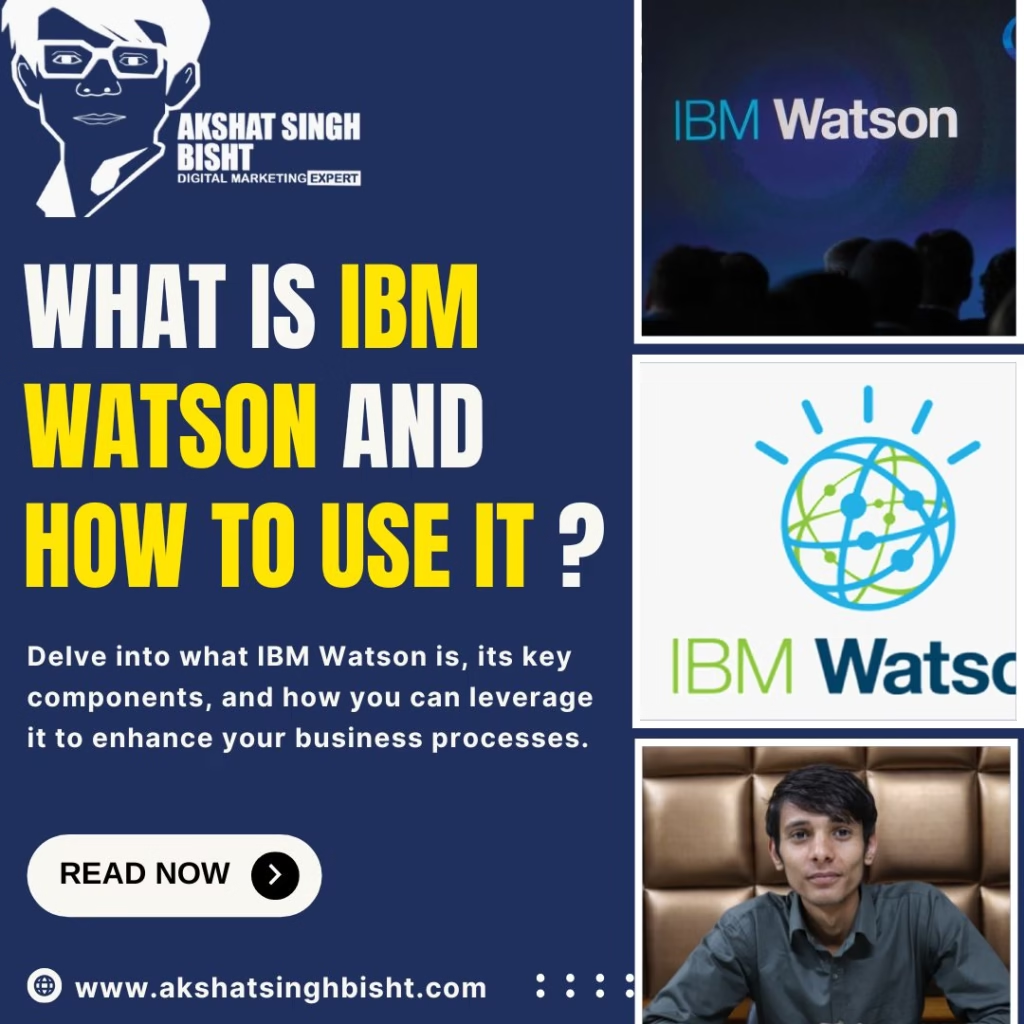IBM Watson, named after IBM’s first CEO Thomas J. Watson, represents a powerful suite of artificial intelligence (AI) and cognitive computing capabilities. As one of the leading AI platforms, IBM Watson offers a range of services that can transform how businesses operate, innovate, and deliver value. In this blog, we’ll delve into what IBM Watson is, its key components, and how you can leverage it to enhance your business processes.

IBM Watson is a cloud-based AI system capable of understanding, reasoning, and learning from vast amounts of unstructured data. It combines advanced machine learning, natural language processing, and real-time data analytics to provide insights and automate complex processes. Originally made famous by winning the game show Jeopardy! in 2011, Watson has since evolved to serve various industries, including healthcare, finance, retail, and more.
Watson Assistant is an AI-powered chatbot that can understand natural language and provide conversational responses. It helps businesses create engaging customer service experiences by automating interactions and providing accurate information.
Watson Discovery is an intelligent search and text-analytics platform. It allows businesses to extract valuable insights from large volumes of unstructured data, including documents, emails, and social media content.
Watson Studio is an integrated environment for data scientists, developers, and domain experts. It provides tools for building, training, and deploying machine learning models, helping organizations accelerate their AI workflows.
Watson Knowledge Catalog is a data cataloging and governance solution. It enables businesses to organize, curate, and share data across the organization while ensuring data quality and compliance.
Watson Natural Language Understanding (NLU) uses natural language processing to analyze text and extract metadata, keywords, entities, sentiment, and more. It helps businesses understand and process human language effectively.
Watson Visual Recognition allows businesses to analyze and classify images. It can identify objects, scenes, and faces, providing valuable insights from visual data.
Implementing IBM Watson in your business involves several steps. Here’s a comprehensive guide on how to get started:
To access IBM Watson services, you need an IBM Cloud account. Visit the IBM Cloud website and sign up for a free account. This will give you access to a range of Watson services with a free tier of usage.
Identify the specific Watson services that align with your business needs. Whether you need a chatbot, data analysis, or image recognition, select the services that will provide the most value to your operations.
Once you have selected the appropriate services, set up your environment in IBM Cloud. This involves creating instances of the chosen services and configuring them according to your requirements.
For services like Watson Assistant and Watson Studio, you may need to train machine learning models using your data. Use the provided tools to upload datasets, train models, and refine them for accuracy and performance.
Integrate the Watson services with your existing applications. IBM provides APIs and SDKs for various programming languages, making it easy to embed Watson capabilities into your software solutions.
After deployment, continuously monitor the performance of your Watson-powered applications. Use analytics and feedback to optimize and improve the AI models and services over time.
In healthcare, Watson can assist in diagnosing diseases, personalizing treatment plans, and managing patient records. For instance, Watson for Oncology helps oncologists by providing evidence-based treatment options.
Financial institutions use Watson to detect fraud, manage risk, and provide personalized financial advice. Watson’s ability to analyze vast amounts of data quickly makes it invaluable in this sector.
Watson Assistant is widely used in customer service to provide instant support and resolve queries. It helps reduce wait times and improve customer satisfaction.
Retailers leverage Watson for demand forecasting, inventory management, and personalized marketing. Watson’s insights help optimize supply chains and enhance the customer shopping experience.
In the legal industry, Watson Discovery aids in document review and legal research. It can quickly sift through legal documents to find relevant information, saving time and improving accuracy.
IBM Watson represents a significant advancement in AI and cognitive computing, offering businesses the tools to innovate and improve their operations. By understanding and leveraging Watson’s capabilities, organizations can gain a competitive edge, enhance customer experiences, and drive efficiency. Whether you are new to AI or looking to expand your existing AI initiatives, IBM Watson provides a comprehensive platform to meet your needs. Start exploring Watson today and unlock the potential of artificial intelligence for your business.
Akshat’s passion for marketing and dedication to helping others has been the driving force behind AkshatSinghBisht.com. Known for his insightful perspectives, practical advice, and unwavering commitment to his audience, Akshat is a trusted voice in the marketing community.
If you have any questions simply use the following contact details.